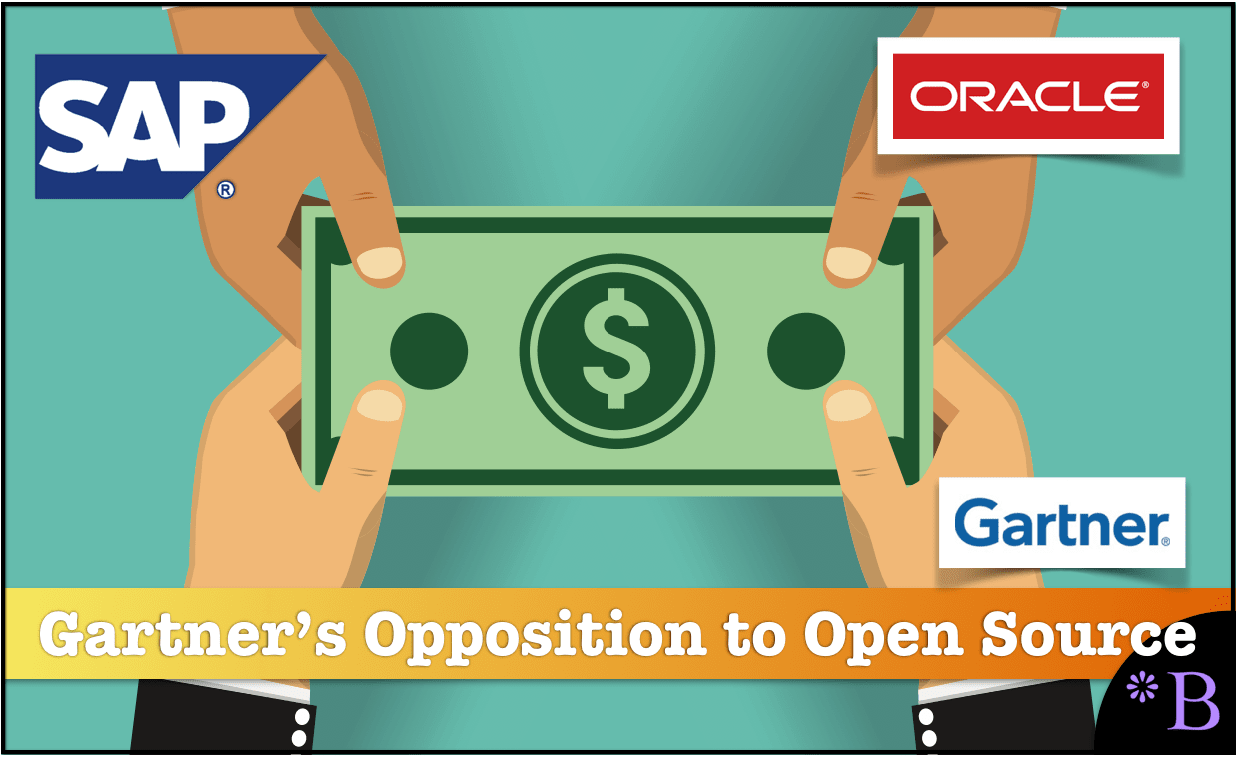How to Understand Gartner and the Patent Software Vendor System
Executive Summary
- Gartner supports the patent software system by recommending only patent software versus customized applications and open source.
- The similarity between patent drug companies and software vendors.
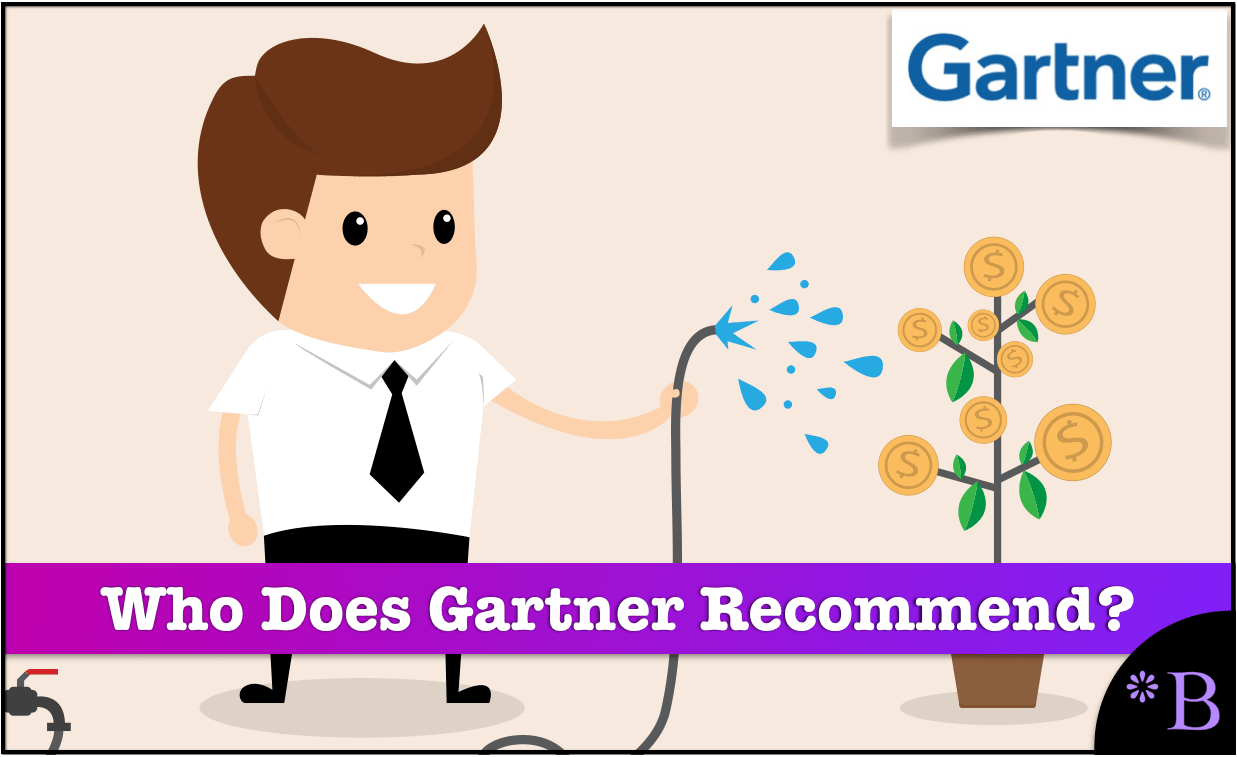
Video Introduction: How to Understand Gartner and the Patent Software Vendor System
Text Introduction (Skip if You Watched the Video)
In previous articles, we pointed out that Gartner pushes higher-paying vendors higher, which are the largest vendors that often have the highest TCO, and the highest consulting tail and associated costs. These are also the vendors that have the highest budgets to have the most extensive analyst groups. You will learn how Gartner ignores open source applications following the same rules of profit maximization that controls everything that Gartner does.
Our References for This Article
If you want to see our references for this article and other related Brightwork articles, see this link.
Notice of Lack of Financial Bias: You are reading one of the only independent sources on Gartner. If you look at the information software vendors or consulting firms provide about Gartner, it is exclusively about using Gartner to help them sell software or consulting services. None of these sources care that Gartner is a faux research entity that makes up its findings and has massive financial conflicts. The IT industry is generally petrified of Gartner and only publishes complementary information about them. The article below is very different.
- First, it is published by a research entity, not an unreliable software vendor or consulting firm that has no idea what research is.
- Second, no one paid for this article to be written, and it is not pretending to inform you while being rigged to sell you software or consulting services as a vendor or consulting firm that shares their ranking in some Gartner report. Unlike nearly every other article you will find from Google on this topic, it has had no input from any company's marketing or sales department.
How Gartner Ranks Vendors
The following is a telling example of the illogical outcome of Gartner’s BI Magic Quadrant.
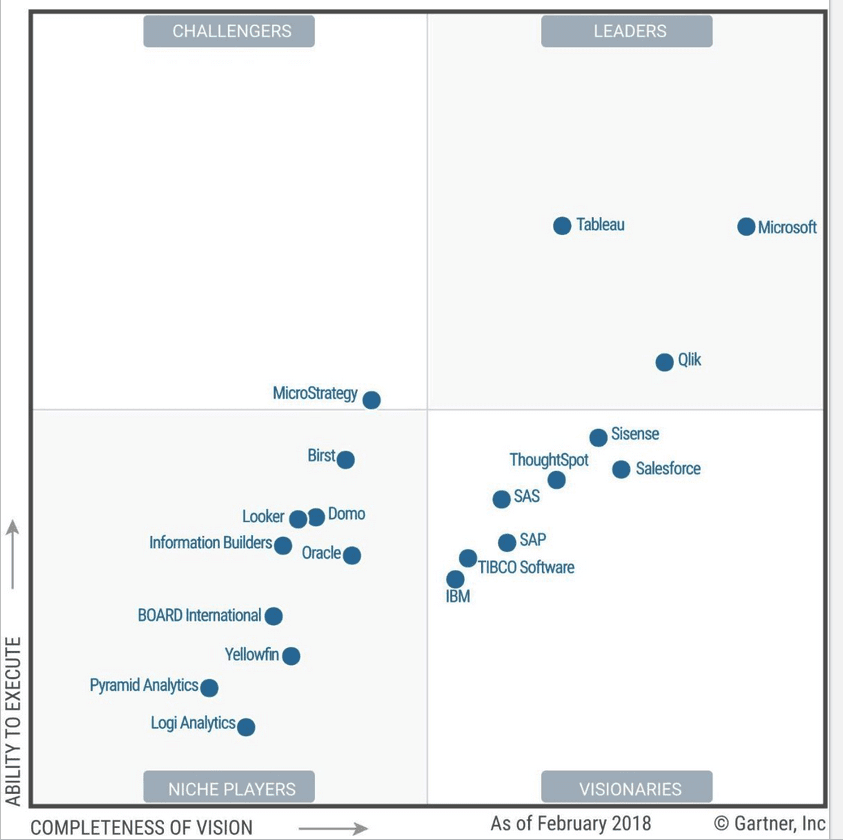
One thing that jumps out immediately is how high Microsoft is ranked. We asked how Microsoft could be ranked so high as we could not name a single prominent BI product that Microsoft possessed. We received the following response.
“Ever heard of Microsoft Excel? It’s the most successful application in the history of software. It’s also the most successful BI application of all time. Excel is so successful as a reporting and analysis tool that nearly every vendor on this report has an Excel add-on or integration option. That means license sales. Excel is so familiar, it makes every other BI product look complex and require user training. Microsoft wins with ease of use.
Microsoft has the lowest price for the most mature feature set. There’s no competition. Nothing can compete with Excel on functionality or price. Then Microsoft leverages all this to deliver cutting edge features in the new Excel on steroids on-premises and in the Azure cloud: Power BI. For example, you can type: Last month sales for Europe by country and get a report or chart or use Cortana to voice query your data. Did I mention Arima ML? The level of technical development and innovation is truly remarkable.” – Ahmed Azmi
We questioned this for the following reason.
Is Gartner Including Spreadsheets as Entries in Their BI MQ?
If Gartner places spreadsheets in the BI category, then why are no other spreadsheets included?
We have said for some time that if you go to customers with any of these BI applications, the most common analysis tool is still by far Excel. However, that would mean including LibreOffice? LibreOffice has pivot tables also. How about Google Sheets? It also has a pivot table functionality. They are not on the same level as PowerPivot, but PowerPivot has more of a niche usage. Or is this MQ excluding all free applications?
And now that we think about it, we never see any open source products in Gartner’s MQ. Of course, it would not be profit-maximizing for Gartner to include free products, so doing so would be a slap in the face of Gartner shareholders. Remember, shareholders trump all other interests; it is codified in the company’s charter.
Seeing how no other spreadsheets are in this BI MQ, we don’t know if they mean Excel. And if they don’t, then we do not understand how MS was placed where it is.
Gartner’s Obvious Disdain for Open Source Applications
And this brought us to the topic of how Gartner does not list open-source or free (Google Sheets is free, but not open-source) applications in its Magic Quadrants.
Here is the Magic Quadrant for databases.
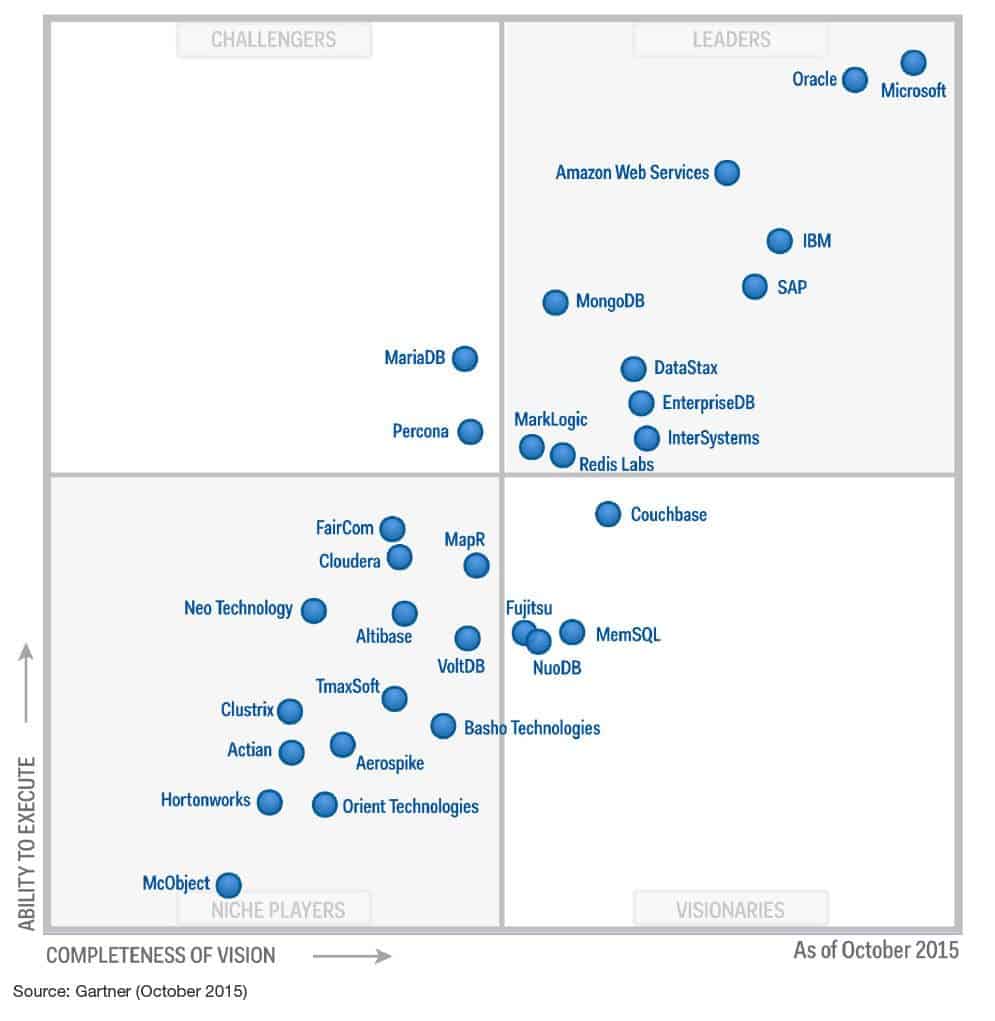
There is all manner of problems with this MQ.
- Hadoop or Hortonworks is a Database?: One obvious problem is that there is not enough specificity around what database type Gartner is talking about here. Hortonworks is a company that implements and supports Hadoop. So why is Hadoop not listed? Hortonworks does not produce Hadoop. It is one of the service companies for Hadoop. So then why is Hortonworks the listed entity?
- Oracle Database is Being Discussed?: Oracle’s primary database product is Oracle 12c, a relational database, but Oracle has several databases.
- Which Database Category?: MongoDB is a NoSQL database. Can MongoDB be compared to Oracle 12c? How can different database types all be on the same MQ? It makes no sense to jumble all of these databases together from various vendors and call this the Operational Data Management System Magic Quadrant, as Gartner has done. Also, come to think of it, what is an ODS? Gartner defines it as the following:
The operational database management system (ODBMS) market is concerned with relational and nonrelational database management products suitable for a broad range of enterprise-level transactional applications.
But it isn’t. These are very different database types that mostly do not compete with one another. Gartner is too lazy to create separate database categories, and so, therefore, decided to smash all the database types together on one MQ.
A Logical Comparison
A similarly logical comparison would be to place full-size pickup trucks along with sedans and sports cars on an “automobile” MQ. And even better to list “automobile” MQ by brand. So General Motors might be the top right, and then Toyota next to them, etc.. What specific car is being rated? Who cares? Gartner is far too busy for that type of detail.
But notice that no open-source databases are listed.
What about MySQL and PostgreSQL? According to DB-Engines, these are two of the most widely used databases, as shown below.
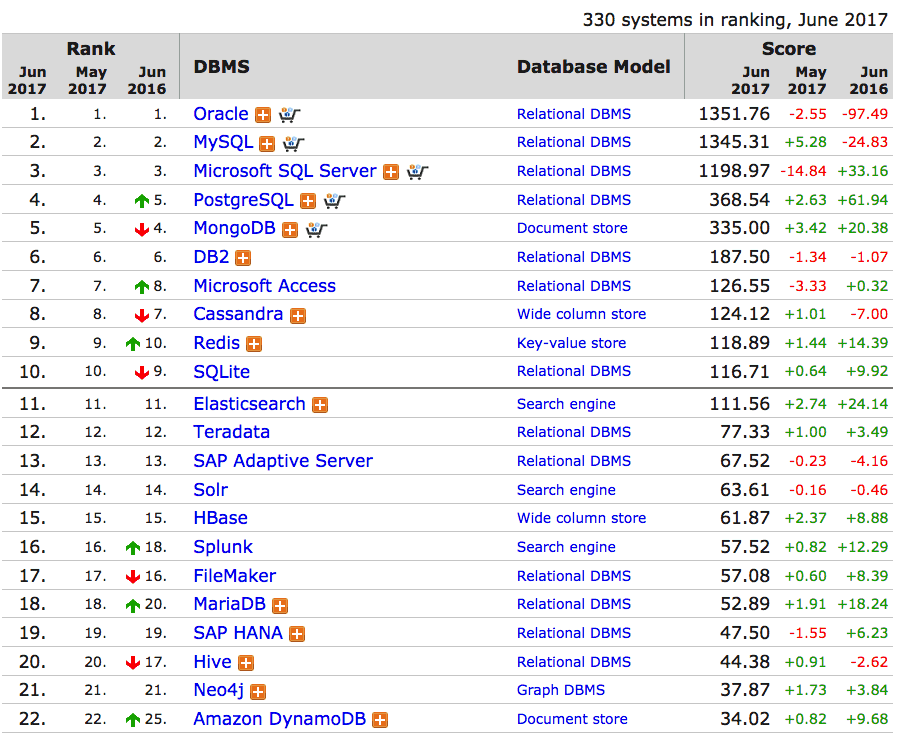
None of the open-source databases on this list are on the Magic Quadrant, even though their popularity would indicate they should be. Gartner’s bias is obvious. Gartner is interested in showcasing entities that make money from software. Could this be because Gartner can then ask these entities to pay Gartner to be listed?
Gartner has been a long term opponent of open source. There is a particular reason for this, and it has nothing to do with the value of open source to software buyers.
Gartner Aggressively Pushing Packaged Solutions on Customers
In this book, SAP Nation 3.0, Vinnie Mirchandani stated that he (I am paraphrasing) worked diligently to recommend that Gartner clients use packaged solutions over custom coding. However, the question is, why? Did Gartner have evidence that companies received better outcomes from packaged solutions vis-a-vis custom coding?
Not.
Did Gartner have any evidence that companies that used ERP systems prospered before promoting ERP?
Again no.
Gartner takes 1/3 of its income from packaged solution vendors. This is covered in the article The Problem with How Gartner Makes its Money. Gartner does not care either way but is a profit-maximizing firm. If Adolf Hitler has written a big enough check, Gartner will write a report talking about how beautiful his concentration camps were. Custom development resources did not send checks into Gartner, so Gartner sided with packaged vendors.
Learning the Truth by Attending a Gartner Conference
The following was observed by Markian Jaworsky while attending a Gartner conference.
The last Gartner conference I attended, there was a Freudian slip. “Don’t use open-source, your business will never give you back the funding”. Therefore, one can read between the lines and infer Gartner’s advice to IT as being “in order to boost your IT budget, buy expensive software even when you don’t need it”.
Yes, Gartner realizes they have to keep budgets high in IT?
Why?
Well, if the budgets decline, that is less money from vendors and consulting firms to Gartner. Gartner plus prominent vendors plus consulting firms are all caught in a mutually beneficial self-reinforcement pattern that continuously increases costs.
It looks like customers better not use Google or AWS because there are many open-source products on those public clouds! However, Google and AWS are commercial entities, so that Gartner can cover them. But the problem is that the more Google Cloud and AWS that customers consume, the more they will naturally begin to leverage open source. They will also allow customers to test solutions before purchasing. Both of these things are bad for Gartner. Therefore, Gartner must view Google Cloud and AWS as threats to their business model.
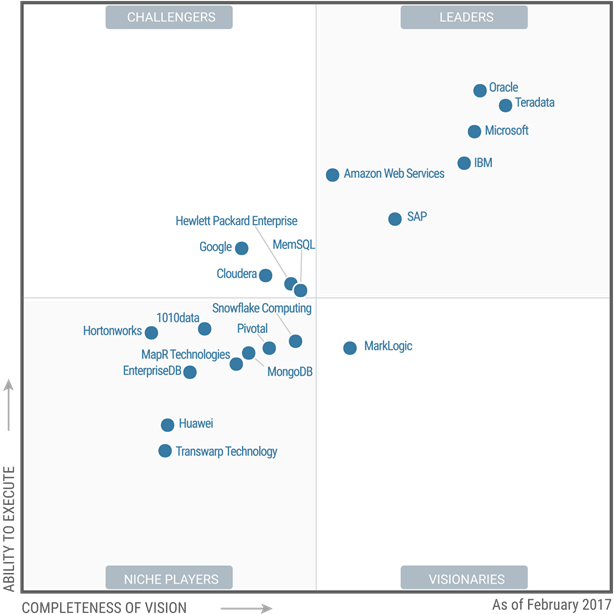
Gartner never lists open source options in its Magic Quadrants. To Gartner, open source may as well not exist. Notice this Magic Quadrant. MongoDB is an open-source database, but the rating here is for the MongoDB company that manages the MongoDB database. Cloudera is similar. Cloudera is a commercial company that implements Hadoop. Hadoop is open source. What database does Hewlett Packard Enterprise offer? There is no listing for HPE at DB Engines, which ranks databases. Why is HPE even on this list? The answer, HPE paid Gartner to be here.
The Terrible Threat of Open Source to the Status Quo
Efficiency and low costs and high flexibility? That all sounds terrible. As per McComb’s book Software Wasteland, they may find out the IT budget can be dramatically reduced. Software Wasteland is the book that the major IT consulting firms or vendors do not want you to read. We cover many topics around waste at Brightwork. However, Dave McComb provides evidence for the waste through the cost of custom development, which is never an approach I considered modeling. I could not do as good a job of modeling, as Dave McComb has such an extensive development background. In the book, he includes excellent examples of costs. The waste of so many packaged implementations is mind-boggling.
TCO Estimation of Packaged Versus Open Source and Custom Development
We offer free TCO estimators for many packaged applications available at this link, The Brightwork Research & Analysis TCO Calculators. These calculators can scale based upon variable input factors as they are based upon regression formulas. (the method is explained in the article The Brightwork Research & Analysis TCO Methodology.)
Cost savings could be determined by estimating the TCO with the Brightwork TCO calculators and then estimating the custom development cost and using Dave McComb’s general guidelines to do it.
Gartner’s Financial Incentives
This single quote illustrates Gartner’s incentives concerning packaged software. Gartner not only guides their customers to packaged software, but they also guide them to the most expensive software because these are the vendors that can pay Gartner the most money. This is marketing for vendors and consulting firms masquerading as research.
The Similarity Between Patent Drug Companies and Software Vendors
What is becoming increasingly clear is that software vendors that do not open source their software behave very similarly to patent drug companies. That is, they spend large amounts of money on marketing and sales and less on development. According to Adam Shepherd, an analyst at Arete Research Services LLP, SAP (for example) spends 29% of its revenue on sales and marketing.
As with patent drug companies that bribe doctors to prescribe their drugs that are on patent, even when there are equally effective generics, “patent” software vendors push money into the media system, with the most significant vendors doing this to the most considerable degree versus smaller vendors. Generics are excluded from the doctor’s discussion when patent samples are available because generic manufacturers do not pay for attractive sales reps to visit doctors’ offices, as do the patent drug companies.
The largest software vendors, Microsoft, SAP, Oracle, and IBM, as with patent drug companies, massively overstate their innovation level and function primarily as sales and marketing companies, often promoting (as with patent drug companies) illusory benefits over far less expensive open-source options.
Another similarity is that both patent drugs and patent software have close to zero marginal cost. And like patent drugs, patent software vendors frequently copy their ideas and mathematics and logic from the public domain and then claim that they came up with the “innovation.”
Conclusion
Gartner is a vital piece of the patent software system. They exclude open source and free software from the discussion showcasing patent software vendors and the largest patent software vendors over the smallest software vendors.
- Gartner opposes custom coding because Gartner cannot obtain money from developers.
- Gartner pretends open source does not exist because open source options cannot pay Gartner.
Hopefully, Gartner recommends whatever they can make money charging for. This turns out to be commercial package vendors and the consulting companies that implement commercial package vendors. This leaves out open source and development paid for by companies internally, and that does not provide revenue for Gartner.
Gartner’s intent is profit maximization, which is how Gartner, a company that does not technical testing and performs very little research — and is itself primarily a sales and marketing organization, grew to over $2.6 billion in revenues. And having open-source software excluded from Gartner’s MQs is an essential way that the patent vendors can block open source options from being shortlisted in software selections. Gartner does not care about what software is useful to purchase, only what income they can extract from the software industry and software buyers.
